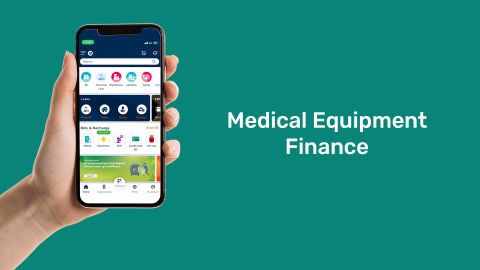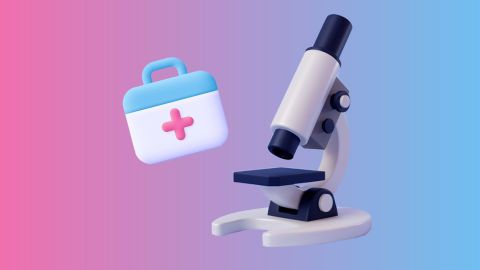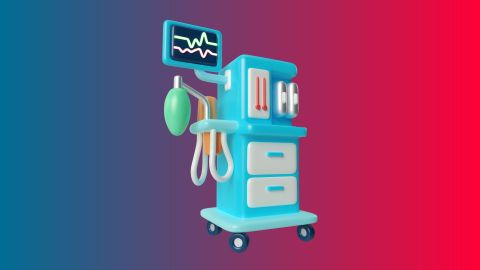Explore everything you need to know about BiPAP machines, including how they work, when they're prescribed, and why they're used. This guide covers the key differences between BiPAP and CPAP, highlights benefits and potential risks, explains how to use the machine, and includes updated 2025 price lists, buying tips, and financing options for buyers in India.
What is the BiPAP machine?
Bilevel positive airway pressure (BPAP), commonly referred to by a widely used term in clinical practice, is a respiratory support device that helps individuals breathe more effectively. It is a type of noninvasive ventilation (NIV) used when a patient can breathe on their own but is struggling to maintain adequate oxygen levels or remove carbon dioxide efficiently. Unlike invasive mechanical ventilation, which requires inserting a tube into the airway, BPAP delivers pressurized airflow through a mask placed over the nose or both the nose and mouth.
The term “positive airway pressure” indicates that the device actively pushes air into the respiratory tract—including the nose, mouth, and trachea—at a pressure higher than normal atmospheric air. This increased pressure helps keep the airway open and supports smoother airflow during both inhalation and exhalation.
When Is BiPAP Needed?
A BPAP machine may be recommended for long-term management of certain chronic conditions or during acute medical emergencies where immediate respiratory support is necessary. Healthcare providers commonly prescribe BPAP therapy for the following conditions frequently observed among Indian patients:
- Cardiac (Heart) Failure: Helps improve gas exchange and reduce the effort required to breathe, especially when fluid accumulation in the lungs makes breathing difficult.
- Chronic Obstructive Pulmonary Disease (COPD): Particularly useful during acute flare-ups when airflow becomes severely restricted.
- Sleep Apnea (Obstructive or Central): Employed when continuous positive airway pressure (CPAP) therapy is ineffective or poorly tolerated.
- Hypercapnic Respiratory Failure: A serious condition in which the body is unable to remove carbon dioxide efficiently, causing dangerous levels of CO₂ to build up in the bloodstream.
Types of BiPAP Machines
BiPAP machines come in different variants, each designed to suit specific respiratory needs. Here are the main types:
Fixed BiPAP: Delivers constant, preset pressure levels for both inhalation and exhalation throughout the night.
Auto BiPAP (Auto-adjusting BiPAP): Automatically adjusts pressure settings in response to the patient's breathing patterns for personalised therapy.
BiPAP ST: Includes a backup respiratory rate that initiates a breath if the user fails to inhale, ideal for those with neuromuscular issues or weak respiratory muscles.
BiPAP AVAPS: Adjusts pressure support based on the user’s tidal volume (air per breath), useful for patients with neuromuscular disorders or varying ventilation needs.
Uses of BiPAP Machine
You may be prescribed a BiPAP machine if you have a chronic health condition or experience a sudden breathing difficulty that requires ventilatory support. Healthcare providers commonly use BiPAP therapy to manage the following conditions:
Heart failure
Chronic obstructive pulmonary disease (COPD)
Obstructive or central sleep apnea
Hypercapnic respiratory failure
Difference between BiPAP and CPAP machine?
The primary distinction lies in the pressure delivery mechanism:
- CPAP (Continuous Positive Airway Pressure): Delivers a single, constant pressure level throughout the entire breathing cycle, regardless of whether the user is inhaling or exhaling.
- BiPAP (Bilevel Positive Airway Pressure): Provides a dual-level pressure, adjusting to a higher level during inhalation (IPAP) and a lower level during exhalation (EPAP).
For the majority of individuals suffering from sleep apnea, CPAP is the standard treatment. However, BPAP is often recommended by specialists when a patient cannot comfortably tolerate the constant high pressure of CPAP or if their condition requires the specific ventilation support offered by the bilevel pressure model.
Benefits of BiPAP
BPAP provides several important benefits compared to other ventilation techniques:
Noninvasive Support: It eliminates the need for inserting a tube into the airway, significantly lowering the risk of complications such as infections or throat injury that are associated with invasive ventilation.
Weaning Assistance: BPAP can be used as an effective intermediate step to help patients transition off full mechanical life support.
Enhanced Option for Sleep Apnea: It serves as an excellent alternative for individuals who are unable to tolerate CPAP therapy or do not experience sufficient improvement with continuous pressure alone.
In severe respiratory cases, combining BiPAP with a medical ventilator machine can offer better outcomes under clinical supervision.
What happens during BiPAP treatment?
- Setup and Titration: The device is switched on, and the pressure settings—IPAP and EPAP—are carefully calibrated during a process called titration to suit the patient’s specific respiratory requirements.
- Mask Fitting: An appropriate mask, either nasal or full-face (covering both nose and mouth), is chosen and fitted. The provider makes sure the mask is snug enough to prevent air leaks but not tight enough to cause skin irritation.
For individuals starting BPAP therapy at home for chronic conditions such as sleep apnea, the process includes:
- Machine Preparation: Place the unit on a stable surface, check that the filter is clean, fill the humidifier chamber if available (especially helpful to avoid dryness in Indian climates), and securely attach the hose between the machine and mask. Your equipment supplier will provide complete setup guidance.
- Application: Put on the mask and adjust the headgear according to instructions from your doctor or technician, usually starting in an upright seated position.
- Activation: Switch on the device.
- Final Adjustment: Lie down and make any small adjustments needed to ensure a comfortable and airtight seal throughout the night.
How long can someone remain on BiPAP?
The length of time a patient needs BPAP support varies based on the underlying medical condition:
Acute Conditions: Except in cases of chronic sleep apnea, most patients use BPAP only until their breathing stabilizes and they can maintain adequate respiration independently.
Long-Term Use: BPAP is not a full life-support system like invasive mechanical ventilation. When used for extended periods—beyond a few days—the patient must be able to take periodic breaks from the machine to breathe room air or receive supplemental oxygen through a nasal cannula.
Sleep Apnea: For individuals with sleep apnea, BPAP therapy is intended for ongoing, nightly use without a defined end date.
Risks of BiPAP machine
While generally safe, BPAP has certain limitations and potential drawbacks:
Requires Spontaneous Breathing: BPAP cannot be initiated if the patient is not breathing on their own at all.
Discomfort and Intolerance: The constant airflow and mask can be inherently uncomfortable, and some patients may struggle to tolerate it for extended durations.
Psychological Effects: The sensation of the mask and the continuous pressure may trigger feelings of claustrophobia (being trapped or closed-in) in certain individuals.
Pulmonary Injury (Rare): In very rare instances, excessive pressure delivery can potentially cause minor damage to the lungs. Modern devices often incorporate safety mechanisms to mitigate this risk.
Hypotension: A decrease in blood pressure (low blood pressure) can occasionally occur.
Aspiration Pneumonia: A slight risk of lung infection if stomach contents are inadvertently inhaled.
To manage other clinical treatments, healthcare providers often rely on a precise infusion pump for controlled medication delivery
BiPAP Machine Price Ranges in 2025
Understanding BiPAP machine prices is essential. Factors such as brand, features, and additional accessories can influence the overall cost.
For detailed pricing information, refer to the table below:
Device Type |
Approx. Price Range (INR) |
Primary Features |
Entry-Level Fixed Pressure (BiPAP ST) |
₹25,000 - ₹40,000 |
Fixed pressure levels, Spontaneous/Timed modes (S/T), basic humidifier |
Mid-Range Auto-Adjusting |
₹45,000 - ₹70,000 |
Automatically adjusts pressure based on needs, quiet operation, advanced event detection |
High-End Advanced Therapy (VAPS/iVAPS) |
₹70,000 - ₹1,00,000+ |
Volume Assured Pressure Support (VAPS/AVAPS/iVAPS), intelligent volume management, high performance |
Many clinics also equip themselves with an ECG machine to monitor heart activity in patients undergoing BiPAP therapy.
Financing options for buying BiPAP machine
Medical equipment loans can ease the financial burden, ensuring accessibility to the best BiPAP machine for improved respiratory health. You can check for financing options for medical equipment to expand your practice with our Medical Equipment Finance.
Conclusion
In conclusion, BiPAP machines offer a tailored solution for individuals with breathing difficulties, enhancing comfort and compliance. Understanding the differences, procedure details, and financing options is crucial for informed decision-making.Consider exploring the Doctor Loan and Hospital Loans for comprehensive financial support.




